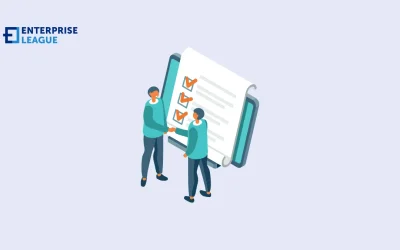The O-1 visa classification stands out among U.S. immigration visas as the only work permit specifically designed for individuals who can demonstrate they are at the pinnacle of their field or making significant strides toward industry leadership.
Several factors make O-1 visas particularly attractive for industries seeking extraordinary talent:
- O-1 visas have no annual quota
- O-1 visas can be extended indefinitely in one-year increments
- O-1 visa offers premium processing, assuring a response within 15 days ($2,805 premium fee)
With quick processing times and support from an O-1 visa lawyer, companies in innovative sectors can use O-1 petitions effectively to bring in exceptional talent from around the world.
While not every industry is ideally suited for O-1 visa recruitment, let’s examine the four sectors that benefit most and how businesses can best utilize these visas.
1. Advanced technology and engineering
Modern engineering and tech projects move at the speed of sprints rather than hiring cycles. This makes the quick turnaround of O-1 visas, especially premium processing, essential.
USCIS now specifically allows “comparable evidence” when traditional awards criteria don’t match modern STEM roles. Petitioners can submit patents, GitHub adoption metrics, or funding records instead of conventional awards.
This flexibility, combined with premium processing, allows startups to align immigration timing with software or product launches rather than waiting for the next H-1B lottery.
Applicant evidence that resonates:
- Peer-reviewed papers in venues such as Nature Machine Intelligence or NeurIPS with citation statistics that show industry uptake.
- Patents or open-source libraries already deployed by Fortune 500 teams, documented through download analytics or internal adoption letters.
Practical employer move
For tech and engineering companies using O-1 visas to build their teams, filing through an agent works best if the engineer will work across multiple portfolio companies. This structure meets the single-employer requirement while allowing work on multiple projects.
2. Life sciences and biotechnology
While drug development takes time, hiring windows often last just days once research shows promise.
Gene-editing scientists, bioinformaticians, and clinical-trial statisticians often qualify for O-1 visas through FDA Fast Track designations that mark their work as “addressing an unmet medical need” – which USCIS considers proof of major significance.
The USCIS guidance for founders about venture funding and patent licensing revenue applies here too, substituting for salary or award requirements when those metrics better reflect a biotech startup’s stage.
Applicant evidence that resonates:
- Formal FDA Fast Track or Investigational New Drug letters naming the scientist as lead investigator are good potential pieces of evidence.
- Licensed patents or Series B term sheets that show commercial traction and validate high remuneration can also be potential examples of evidence.
Practical employer move
Get a peer advisory letter from a respected source like the American Society of Gene & Cell Therapy. A clear one-page explanation of complex clinical data helps USCIS officers understand the significance.
3. Digital media and influencer marketing
Campaign schedules are often fixed and can’t adjust to immigration delays when bringing in essential talent.
Under an agent-filed O-1B petition, creators can film, stream, and launch products for multiple brands without filing new petitions for each contract change.
USCIS accepts analytics dashboards and mainstream press coverage as proof of national or international recognition. Top immigration firms detail how follower counts, engagement rates, and major sponsorship deals meet the “high remuneration” requirement.
Applicant evidence that resonates:
- Screenshots from verified analytics platforms showing verified followers, watch hours, and engagement rates that place the creator in the top one percent of their niche.
- Articles in Forbes or AdWeek, plus brand contracts that document annual earnings well above the industry median.
Practical employer move
Include a twelve-month schedule of shoots, live events, and content launches. A detailed timeline proves ongoing work and helps avoid “speculative employment” denials common in entertainment cases.
4. Professional sports and athletics
When it comes to endorsements, TV rights, and roster deadlines, even short delays can be problematic.
Many teams prefer the O-1 visa since it avoids P-1 visa caps and allows athletes to earn additional income through clinics, media work, and sponsorships. USCIS lists world rankings, governing-body letters, and major-league contracts as main documentation options for athletic O-1 visas.
Applicant evidence that resonates:
- Top-50 international rankings, Olympic medals, or verified league statistics pulled directly from governing databases are good potential contributions.
- Endorsement or club contracts that show salaries far above league averages can also aid in establishing extraordinary remuneration.
Practical employer move
Submit applications during the athlete’s off-season when possible. Many clubs get approvals in 4-6 weeks with premium processing, allowing visas to be secured before pre-season travel and roster deadlines.
Taking advantage of extraordinary abilities
The O-1 visa helps companies in engineering, biotech, digital media, and sports move quickly to secure exceptional talent.
For individuals seeking permanent residence, the O-1 visa to green card path often proves more successful than direct green card applications.
Success comes from matching each excellence claim with clear, measurable proof that anyone can understand. Two or three focused peer letters, concrete impact or earnings data, and a detailed work plan typically meet requirements, especially with comparable evidence arguments using USCIS terminology.
With premium processing’s 15-business-day review, exceptional candidates can start work before most H-1B lottery selections are even made.
In competitive industries where timing is critical, this speed advantage can determine market success.





